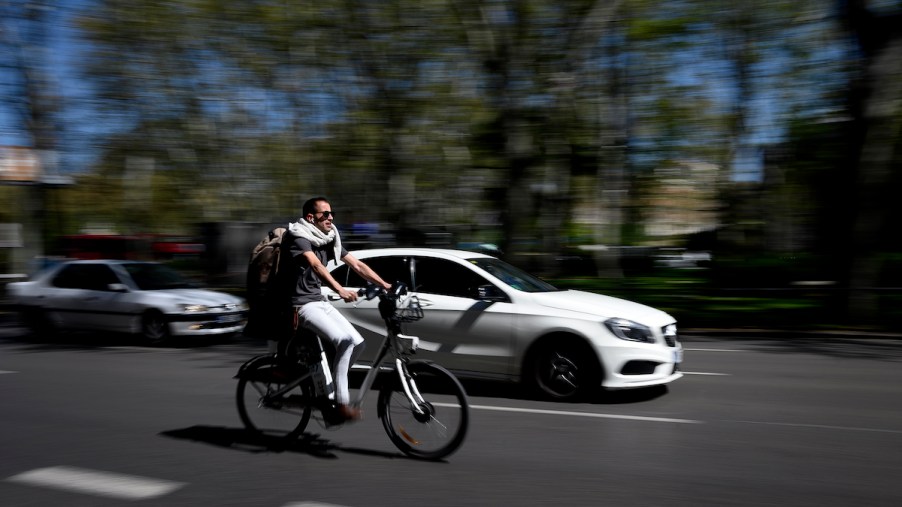
None of the Best-Selling Electric Vehicles in America Come With a Steering Wheel
As more consumers desire eco-friendly products, EV sales have increased tremendously. Tesla was the most successful EV seller last year, especially thanks to the Model Y’s affordability. However, as prices for Tesla electric vehicles continue to rise, the Ford Mustang Mach-E could exceed even the beloved Model 3’s popularity.
Even so, those models still aren’t the best-selling EVs in the nation. According to Green Car Reports, the most popular electric vehicles don’t even have steering wheels. Here’s how e-bikes work and why they’ve become so popular in recent years.
Why are e-bikes so special?

Though some electric scooters and motorcycles are available, most e-bikes look like regular bicycles. However, they have motors and batteries in addition to the standard pedals and wheels. You still have to drive an e-bike yourself, but its extra components can help you reach higher speeds and climb hills more easily.
E-bikes also have a controller located between the handlebars. The controller allows you to tap into the e-bike’s available electric power when needed. Some of these controllers are operated by the foot pedals, while others are engaged by twisting the throttle.
The range of any given e-bike depends upon the motor’s size and placement. Mid-drive motors are typically the most efficient, with some models getting 120 miles of range. Hub motors keep the e-bike’s wheels turning faster, but going up hills can lower their efficiency.
The recent success of e-bikes
Green Car Reports data shows that imports of e-bikes to the United States rose more than 50% between 2020 and 2021. These import shipments also included e-bike conversion kits and other electric two-wheelers, such as scooters. Nearly 800,000 e-bikes were brought to the U.S. last year, while electric car sales totaled around 652,000 units.
Year-by-year e-bike sales are difficult to quantify because the U.S. market hasn’t been as historically popular. Therefore, not many publications keep track of these figures. Still, the fact that the demand for imports was so high shows that more U.S. consumers are purchasing e-bikes.
According to Bloomberg, some reports show 368,000 e-bikes sold as of November 2021. In international markets, the demand for e-bikes has always been high. Asia leads with an estimated 25 million e-bikes sold annually, and Europe moves around three million units each year.
Why don’t more automakers add electric bikes to their lineups?
E-bikes produced by popular automakers have received only a lukewarm reception in the past. Though e-bikes aren’t nearly as expensive to produce as cars, it’s still a costly endeavor. If only 10,000 or so units sell, it’s little incentive for companies to continue manufacturing these vehicles.
However, the pandemic seems to have sparked a new interest in e-bikes that could change the minds of automotive executives. In the current global climate, many consumers are having trouble finding work or managing their old spending budgets. An e-bike is relatively more affordable to purchase and maintain than a car.
Due to the global chip shortage and other factors affecting supply issues, it’s also easier to locate e-bikes in general. E-bikes can also be a welcome alternative to public transportation; plus, they have significant health and environmental benefits.
Consumers have also shown interest in unofficial concepts, such as the Tesla e-bike design. And Honda has promised to make four electric bikes, all small motorcycles, in the upcoming years.
According to Green Car Reports, Rivian, known for its innovative electric trucks, has also hinted at an e-bike release. As manufacturers eventually phase out gas-powered cars, we’ll likely see even more electric two-wheelers.


